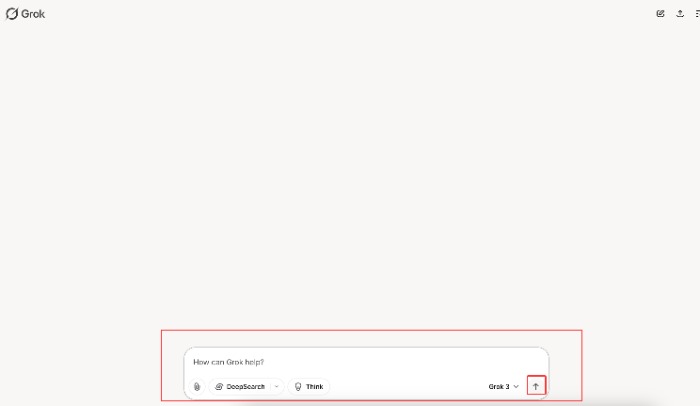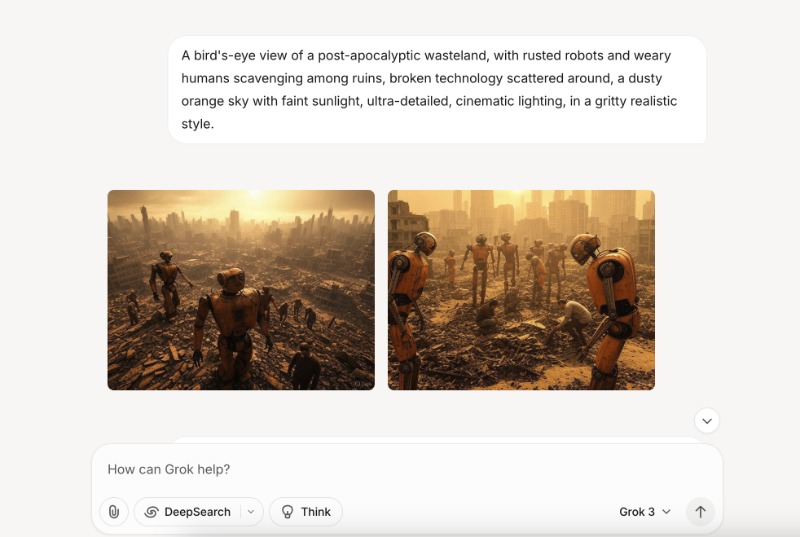Tesla announces launch of universal AI fully autonomous driving solution
Hugging Face acquires Pollen Robotics to enter the field of open source robot hardware
GPT-4.1 model unveiled! Cursor and Windsurf help developers encode more efficiently
OpenAI future model access will require authentication: Improve security and compliance
Aurora is an image generation model officially launched by Grok on December 9, 2024, replacing the previous Flux.1 model . It is an autoregressive mixture-of-experts network developed by xAI, with training data containing billions of internet text and image samples, thus doing excellently in generating realistic images and accurately following prompt words.
Aurora is Grok's built-in image generation model designed to generate high-quality, realistic images. It supports the following features:
Text-to-image generation: Generate images through text prompt words.
Image editing: An existing image can be uploaded and modified via text prompts (such as "turn this image into cyberpunk style").
Multimodal input: supports combining text and image input to generate more creative images.
Realistic Rendering: Especially good at generating real portraits, objects, logos and text.
Aurora received much attention when it was launched because it was relatively loose in terms of content restrictions, generating images including public figures and copyrighted characters, but preventing naked or overly violent content.
Aurora is fully integrated into Grok and as of April 9, 2025, it will be available to all users of X platform, including free users and Premium/Premium+ users. The following are the specific operation steps:
Open X Platform (web version or mobile app).
Find the entrance to Grok in the left sidebar (web version) or the bottom navigation bar (mobile version) and click to enter the Grok chat interface.
If you are a free user, you need to make sure that your X account has been created for more than 7 days and has a mobile phone number bound to meet the usage conditions.

In Grok's model selection menu, confirm that the current model is a version that supports Aurora.
Since December 9, 2024, Aurora has become Grok's default image generation model. If the menu says "Grok 2 (new)" or "Grok 2 + Aurora", you are using Aurora.
If "Grok 2 + Flux (beta)" is still displayed, it means your region may not be fully updated yet, you can wait a few days or contact X Support.
In the Grok dialog box, directly enter your image generation requirements and use natural language description. For example:
English prompt words: “A bird's-eye view of a post-apocalyptic wasteland, with rusted robots and wear humans scavenging among rubins, broken technology scattered around, a dusty orange sky with weak sunlight, ultra-detailed, cinematic lighting, in a gritty realistic style.”
Chinese Prompt Word: "Generate a bird's-eye view painting of the post-doom wasteland, containing rusty robots and tired humans searching through the ruins, surrounded by damaged technical equipment, dusty orange sky, faint sunshine, super detailed, film light and shadow, realistic style."
Tips Suggestions:
Try to be specific and describe the details of the scene, perspective, color, light and shadow.
If you need a specific style, you can add "in the style of [style]", such as "in the style of a cyberpunk painting".
Aurora has a more accurate understanding of English prompt words, but Chinese prompt words can also produce good results.
Grok will call the Aurora model to generate images, which usually takes several seconds to tens of seconds, depending on the server load and the complexity of the prompt word.
After the generation is completed, Grok will directly return the image, which you can view and download in the chat interface.

If you are not satisfied with the generated results, you can further adjust through the dialogue. For example:
“Make the scene darker and add more robots.”
“Change the sky to a darker orange with more dust.”
You can also upload an existing image and ask for editing, for example:
Upload a photo of the ruins and type: "Add a group of rusted robots and a few humans scavenging in this scene."
Grok will regenerate or edit images based on your feedback.
Free users: 4 images can be generated every day, and up to 10 messages (including image generation requests) are sent every 2 hours.
Premium users: Up to 50 image generation requests per day, the specific restrictions vary by subscription level.
Premium+ User: Almost unlimited use, but may still be affected by server load.
If you reach the limit, Grok will prompt you to wait (e.g. try again after 2 hours) or suggest upgrading your account.
Aurora has the following highlights in the field of image generation:
High fidelity: Aurora is good at generating realistic images, especially in portraits, objects and scenes. User feedback is comparable to Midjourney or DALL-E 3.
Less content limitations: Aurora allows the generation of images of public figures or copyrighted characters (such as Mickey Mouse) compared to other models, but prevents the generation of naked or violent content.
Multimodal support: It can combine text and image input to support more complex creative needs.
Editing features: Aurora supports image editing, such as converting a real photo into an anime style, or adding specific elements to the image.
In order to achieve better generation results, writing prompt words is very important. Here are some practical suggestions:
Specific description: including scene details, colors, light and shadow, viewing angle, etc., such as "a dusty orange sky with faint sunlight".
Specify style: Add artistic style, such as "in a gritty realistic style" or "in the style of a dystopian sci-fi movie".
Avoid blurring: Don't use overly abstract descriptions like "something cool", but be concrete, such as "a futuristic wasteland with rusted robots".
Iterative adjustment: If the first generation is not ideal, you can gradually add more details, such as "add more debris and broken tech in the foreground".